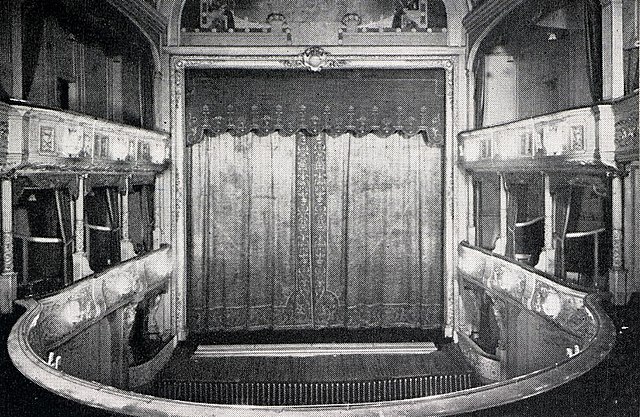His Majesty's Theatre, London
His Majesty's Theatre is a West End theatre situated in the Haymarket in the City of Westminster, London. The building, designed by Charles J. Phipps, was constructed in 1897 for the actor-manager Herbert Beerbohm Tree, who established the Royal Academy of Dramatic Art (RADA) at the theatre. In the early decades of the 20th century Tree produced spectacular productions of Shakespeare and other classical works, and the theatre hosted premieres by such playwrights as Bernard Shaw, J. M. Synge and, later, Noël Coward and J. B. Priestley. Since the First World War the wide stage has made the theatre suitable for large-scale musical productions, and His Majesty's has accordingly specialised in hosting musicals. It has been home to record-setting musical theatre runs such as the First World War hit Chu Chin Chow and Andrew Lloyd Webber's The Phantom of the Opera, which has run at His Majesty's since 1986, except during the COVID-19 pandemic theatre closures.
Exterior of the theatre, 2023
John Vanbrugh painted by Godfrey Kneller, c. 1704–1710
The King's Theatre, Haymarket; watercolour by William Capon
Interior of second theatre on the site, c. 1808 (drawing by Auguste Pugin and Thomas Rowlandson for Ackermann's Microcosm of London)
West End theatre is mainstream professional theatre staged in the large theatres in and near the West End of London. Along with New York City's Broadway theatre, West End theatre represents the highest level of commercial theatre in the English-speaking world. Seeing a West End show is a common tourist activity in London. Famous screen actors, British and international alike, frequently appear on the London stage.
West End theatres on Shaftesbury Avenue in 2016.
The London Palladium in Soho opened in 1910. While the Theatre has a resident show, it also has one-off performances such as concerts. Since 1930 it has hosted the Royal Variety Performance 43 times.
Theatre Royal, Drury Lane. Opened in May 1663, it is the oldest theatre in London.
Original interior of Savoy Theatre in 1881, the year it became the first public building in the world to be lit entirely by electricity.








